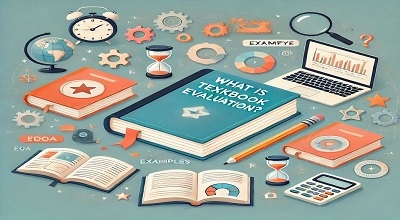Textbook Evaluation
Textbook evaluation is a systematic process of assessing the quality, relevance, and appropriateness of a textbook or instructional material for a particular educational purpose. The goal of textbook evaluation is to determine whether a textbook is suitable for use in a specific educational context and to identify its strengths and weaknesses. This process is crucial in ensuring that the chosen instructional materials align with educational goals, standards, and the needs of both teachers and students.
Here are some key aspects often considered in textbook evaluation:
Content Accuracy:
- Is the information presented in the textbook accurate and up-to-date?
- Does it cover the necessary topics in sufficient depth?
Pedagogical Design:
- How well is the content organized and presented?
- Are there clear learning objectives, summaries, and review questions?
Clarity and Readability:
- Is the language accessible to the target audience?
- Are illustrations, graphs, and other visual elements clear and helpful?
Relevance:
- Does the content align with the curriculum and educational standards?
- Is it culturally sensitive and inclusive?
Engagement and Interactivity:
- Does the textbook include activities, exercises, or multimedia elements to engage students?
- Is there a balance between text and interactive elements?
Assessment:
- Are there appropriate assessment tools, such as quizzes or tests?
- Do these assessments effectively measure student understanding?
Teacher Support:
- Are there resources or guidance for teachers on how to use the textbook effectively?
- Does it provide additional materials or suggestions for differentiation?
Durability and Cost:
- Is the textbook physically durable for repeated use?
- Is it cost-effective for both schools and students?
Final Words
Examples of specific criteria for evaluating textbooks may vary based on educational levels, subjects, and regional requirements. For instance, a science textbook might be evaluated based on the accuracy of its scientific content. The inclusion of experiments, and the clarity of diagrams. A language arts textbook might be assessed for the development of reading and writing skills, literary analysis, and language usage.
Educational institutions and professionals often use evaluation criteria to compare different textbooks and select the most suitable ones for their teaching objectives. This process ensures that instructional materials contribute effectively to the learning experiences of students.
